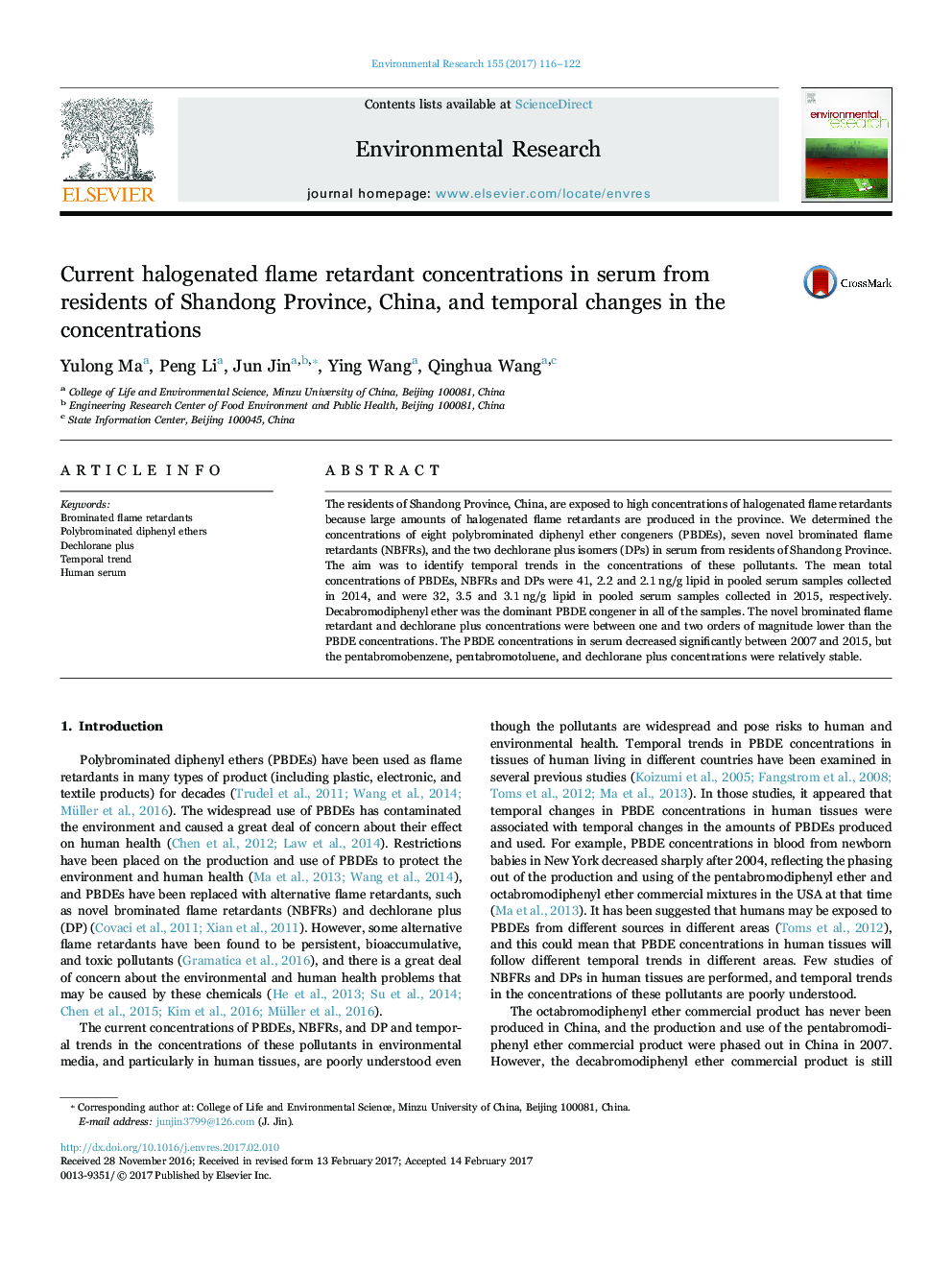| Article ID | Journal | Published Year | Pages | File Type |
|---|---|---|---|---|
| 5756207 | Environmental Research | 2017 | 7 Pages |
Abstract
The residents of Shandong Province, China, are exposed to high concentrations of halogenated flame retardants because large amounts of halogenated flame retardants are produced in the province. We determined the concentrations of eight polybrominated diphenyl ether congeners (PBDEs), seven novel brominated flame retardants (NBFRs), and the two dechlorane plus isomers (DPs) in serum from residents of Shandong Province. The aim was to identify temporal trends in the concentrations of these pollutants. The mean total concentrations of PBDEs, NBFRs and DPs were 41, 2.2 and 2.1Â ng/g lipid in pooled serum samples collected in 2014, and were 32, 3.5 and 3.1Â ng/g lipid in pooled serum samples collected in 2015, respectively. Decabromodiphenyl ether was the dominant PBDE congener in all of the samples. The novel brominated flame retardant and dechlorane plus concentrations were between one and two orders of magnitude lower than the PBDE concentrations. The PBDE concentrations in serum decreased significantly between 2007 and 2015, but the pentabromobenzene, pentabromotoluene, and dechlorane plus concentrations were relatively stable.
Keywords
Related Topics
Life Sciences
Environmental Science
Health, Toxicology and Mutagenesis
Authors
Yulong Ma, Peng Li, Jun Jin, Ying Wang, Qinghua Wang,
